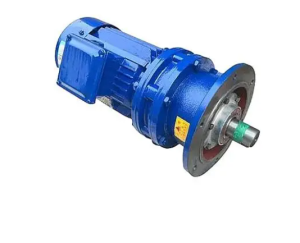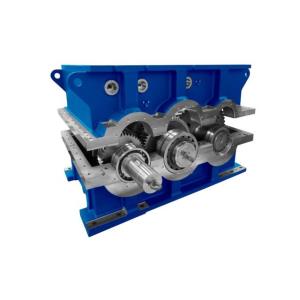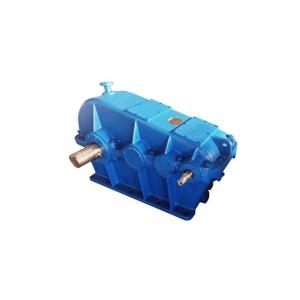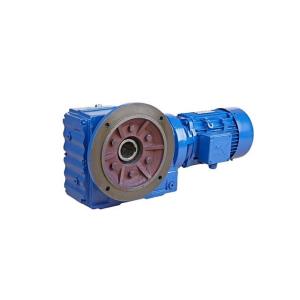Planetary reducer selection guide
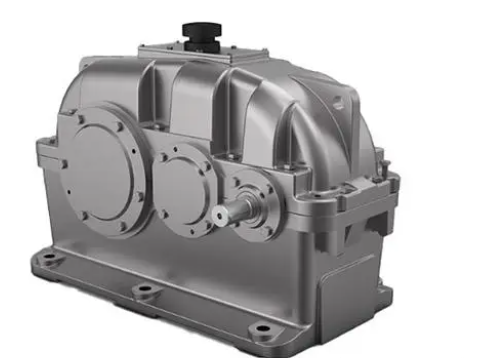
This article mainly discusses the selection of WPWV80,WPWV100,WPWV120,WPWV135,WPWV155 planetary reducers for the Lisan electromechanical system. It is recommended to choose from the following aspects:
Final output torque → output speed → motor power (torque) → flange base (installation requirements) → transmission ratio → transmission efficiency → protection requirements → high and low temperature requirements → cost-effectiveness
1. Output torque calculation:
Method 1: Output torque T=Motor torque N.m * Transmission ratio i * Efficiency
Method 2: Output torque T=Reducer torque=9550 x Motor power KW ÷ Motor input speed r/m x Transmission ratio i x Service factor F (usually 0.8 is sufficient, see Appendix 1 for details)
2. Calculation of numerical ratio:
Speed ratio i=motor output speed r/m ÷ reducer output speed r/m
3. Determination of torque and flange base:
The actual torque used should be within 80% of the rated torque of the reducer to better meet the requirements of service life and working conditions. Based on the final output torque, the final flange seat size can be determined.
Example: The output torque of the gearbox is 18N. m, and the output speed is 30Prm; Since the 42 series can only meet a maximum of 10N. m, it is recommended to choose the 60 series to meet the requirements.
According to method one, the static torque of the motor is 2.8N. m (30%~40%, which can be determined based on the torque frequency characteristics).
Speed ratio i=18/2.8 * 40%/94% (efficiency) ≈ 16.7, speed ratio>16, it is recommended to choose a 20 ratio.
Torque T=2.8 * 40% * 20 * 94% (efficiency)=21N. m.
And the output torque is ≤ 80%, which can meet the customer's usage requirements.
4. Installation requirements:
Output end: Output flange mounting boss → Output flange mounting hole diameter/pitch → Installation hole/tooth hole → Output shaft diameter → Total length of output shaft from flange end face
Input end: Input flange inner stop → Input flange installation hole diameter/hole spacing → Installation hole/tooth hole → Input shaft hole diameter → Input shaft effective length
Total length of body structure: installation space (generally referring to the base) → total length of input to output flange end face
5. Special requirements
Protection requirements → Low temperature requirements → Noise requirements → Customized requirements (usually project type)
6. Cost performance ratio
Selection should be based on the actual usage requirements of customers, selecting the most cost-effective solution to meet their needs; Alternatively, if the customer previously purchased a product with a low price but a high repair rate, which affects efficiency, we can recommend a higher-level product to the customer to solve their concerns.
-
2024-04-12In the modern mechanical industry, the application of reducers is quite extensive, among which the TBW9255L planetary cycloidal pinwheel reducer, as a high...Details +
-
Characteristics and detailed introduction of H3HH8-71-G gearbox
2024-04-12The H3HH8-71-G gearbox is a widely used transmission device in the industrial field, characterized by high precision, high strength, and high efficiency. This...Details + -
ZS165 series cylindrical gear reducer achieves efficient and stable power transmission device
2024-04-11In the modern industrial field, a WPWV175,WPWV200,WPWV250,WPWDV40,WPWDV50 reducer is a very important power transmission device used to reduce the output speed ...Details + -
Structural features and advantages of K series spiral bevel gear reducer
2024-04-11WPEDS60-100,WPEDS70-120,WPEDS80-135,WPEDS80-147,WPEDS100-155 Gear reducer is a widely used mechanical equipment in the industrial field, among which the K...Details +



